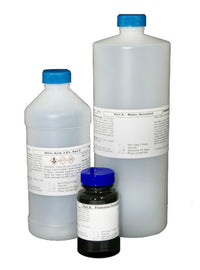Eriochrome Black T indicator, 1 wt. % in Sodium Chloride *
Chemistry Table
| 1787-61-7 | |
| C20H12N3NaO7S | |
| 461.4 | |
| Mordant Black 11, Solochrome Black T, Fast Chrome Black T, Solochrome Black, Potting Black C, Hispacrom Black T, Chromazine Black T, Chromocard Black T | |
| 135465089 | |
| Laboratory Grade | |
| 1% by weight | |
| Eriochrome Black T |
Have a question?
Become a Lab Alley Member and

RECEIVE exclusive offers, promotions, and discounts on chemicals.

Always have the product you need, when you need it with our AUTOSHIP program.







